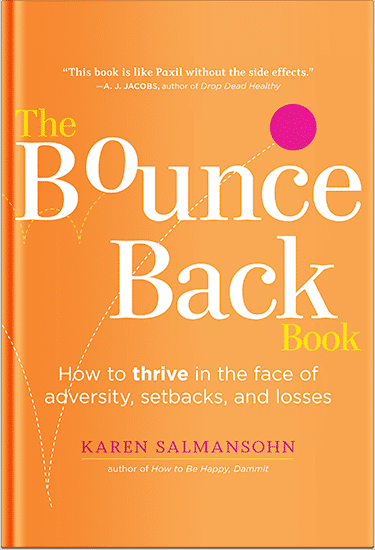 As people age, routines and mobility shift. Tasks that were once second nature may require more effort or support. Smart home technology can fill those gaps, not by replacing autonomy but by supporting it. For seniors who want to age in place, integrating smart devices can reduce everyday risks, offer practical support, and contribute to a more comfortable and secure living environment.
As people age, routines and mobility shift. Tasks that were once second nature may require more effort or support. Smart home technology can fill those gaps, not by replacing autonomy but by supporting it. For seniors who want to age in place, integrating smart devices can reduce everyday risks, offer practical support, and contribute to a more comfortable and secure living environment.
Safety Starts with Awareness
One of the most common concerns in aged care is the risk of falls and accidents that happen without anyone noticing. Smart home products that monitor activity offer a layer of safety that doesn’t feel intrusive. For example, movement sensors for the elderly can track activity in key areas such as bedrooms, hallways, and bathrooms.
If there’s a long period of inactivity, these sensors can trigger alerts to a caregiver or family member. This is especially useful during the night or in cases where seniors live alone. They don’t have to wear anything or push a button. The system just works in the background, quietly improving response times in emergencies.
Motion sensors also help automate other functions. A bathroom light can switch on automatically when someone enters, which reduces the chances of tripping in the dark. These features are especially useful for seniors with visual or mobility limitations.
Entry and Exit Control
Security is another major point of concern. Traditional locks can be difficult for arthritic hands, and keys can be lost or forgotten. Smart locks solve this without adding complexity. You can program them to lock and unlock through mobile devices or simple voice commands.
Some allow remote control so family members or caregivers can assist when needed. If someone forgets to lock the door, the system can do it automatically. Smart doorbells further strengthen safety, letting seniors see who’s at the door without having to approach it.
Lighting, Heating, and Climate Control
Managing the indoor environment is easier with smart home devices that adjust to preferences and patterns. Smart lights can be set on schedules or activated through motion or voice. This cuts down on the need to reach switches or walk into dark spaces. Some smart bulbs adjust brightness automatically based on the time of day, improving visibility and supporting circadian rhythms.
Climate control matters, too. Many older adults are more sensitive to changes in temperature. Smart thermostats learn user preferences and adjust heating or cooling automatically. These settings can be monitored or changed remotely so caregivers or family members can check in when needed.
Assistance with Daily Tasks
While safety is a major function of smart home technology, it also helps simplify daily activities. Voice assistants can help with reminders for medications, appointments, and even hydration. You can set up alerts to repeat at specific times or link them with smart speakers and displays for visual cues.
Smart coffee makers and kitchen appliances can be programmed to start at specific times or respond to voice commands. This reduces the need for manual handling and keeps routines intact without adding pressure or risk.
For those with memory challenges, automation control systems can simplify routines and minimize errors. Medication management is a good example. Smart dispensers and reminders help avoid accidental overdoses by guiding users through correct timing and dosage.
Monitoring Health and Well-Being
Smart technology can support both physical and mental health. Devices that monitor personal health data, such as heart rate or sleep patterns, offer insight into changes that might need medical attention. Some systems can be linked with healthcare providers, while others allow caregivers to receive updates.
Mental health also deserves attention. Smart home devices can help reduce isolation through features that support social interaction. Video calling tools integrated into smart displays make it easier to connect with loved ones, even for those who are not tech-savvy. Scheduled check-ins or casual chats become more accessible, contributing to a sense of connection.
Voice assistants can also provide entertainment, from audiobooks and news to music and trivia. These interactions, while simple, can have a positive impact on mental well-being and overall quality of life.
Designing for Elderly Users
 Not all smart home products are built with older adults in mind. Differences in quality, user experience, and technical standards can influence the adoption of technology. Simpler interfaces, large touchscreens, and voice-driven commands make systems easier to use. Customization is key—some users need more reminders, others want more automation, while some just want a way to turn off the lights without getting out of bed.
Not all smart home products are built with older adults in mind. Differences in quality, user experience, and technical standards can influence the adoption of technology. Simpler interfaces, large touchscreens, and voice-driven commands make systems easier to use. Customization is key—some users need more reminders, others want more automation, while some just want a way to turn off the lights without getting out of bed.
It helps to prioritize features based on current needs and gradually introduce new tools. Support from family members or home care services can ease the setup process and promote a smoother transition.
Making Smart Homes Work for You
A smart home for seniors isn’t about tech for tech’s sake. It’s about practical support for everyday living for older people. Smart home devices can help with tasks, reduce physical strain, and provide peace of mind for everyone involved.
The goal is to support independence, not limit it. When thoughtfully chosen and correctly configured, smart home products enhance comfort, support daily routines, and keep the home a safe space. As needs change, these systems can grow with you, offering flexibility without constant upgrades.
Adoption of technology doesn’t have to be overwhelming. It just has to be useful. Start with one or two smart tools that align with your routine. Add more as you go. Smart home technology can offer real benefits when it’s introduced gradually and aligned with your routine.
P.S. Before you zip off to your next Internet pit stop, check out these 2 game changers below - that could dramatically upscale your life.
1. Check Out My Book On Enjoying A Well-Lived Life: It’s called "Your To Die For Life: How to Maximize Joy and Minimize Regret Before Your Time Runs Out." Think of it as your life’s manual to cranking up the volume on joy, meaning, and connection. Learn more here.
2. Life Review Therapy - What if you could get a clear picture of where you are versus where you want to be, and find out exactly why you’re not there yet? That’s what Life Review Therapy is all about.. If you’re serious about transforming your life, let’s talk. Learn more HERE.
Think happier. Think calmer.
Think about subscribing for free weekly tools here.
No SPAM, ever! Read the Privacy Policy for more information.
One last step!
Please go to your inbox and click the confirmation link we just emailed you so you can start to get your free weekly NotSalmon Happiness Tools! Plus, you’ll immediately receive a chunklette of Karen’s bestselling Bounce Back Book!


 As people age, routines and mobility shift. Tasks that were once second nature may require more effort or support. Smart home technology can fill those gaps, not by replacing autonomy but by supporting it. For seniors who want to
As people age, routines and mobility shift. Tasks that were once second nature may require more effort or support. Smart home technology can fill those gaps, not by replacing autonomy but by supporting it. For seniors who want to  Not all smart home products are built with older adults in mind. Differences in quality, user experience, and technical standards can influence the adoption of technology. Simpler interfaces, large touchscreens, and voice-driven commands make systems easier to use. Customization is key—some users need more reminders, others want more automation, while some just want a way to turn off the lights without getting out of bed.
Not all smart home products are built with older adults in mind. Differences in quality, user experience, and technical standards can influence the adoption of technology. Simpler interfaces, large touchscreens, and voice-driven commands make systems easier to use. Customization is key—some users need more reminders, others want more automation, while some just want a way to turn off the lights without getting out of bed.